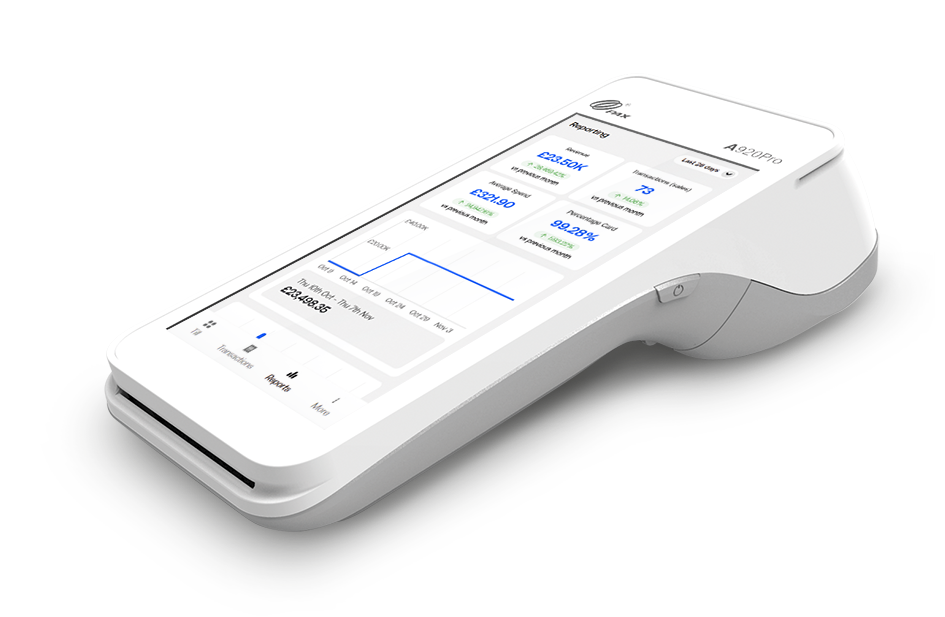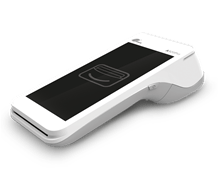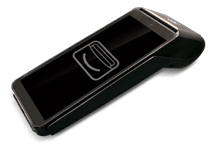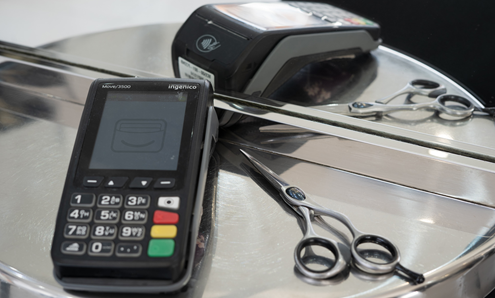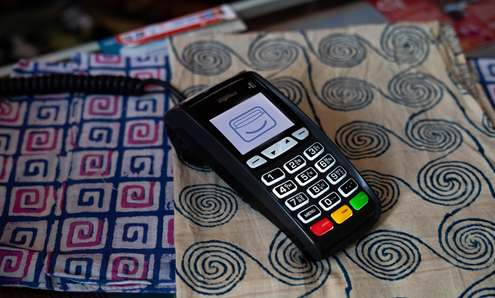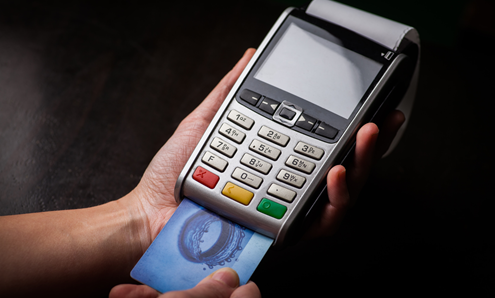Gone are the days when you had to be glued to your till to take card payments. The landscape’s constantly evolving, and with that comes more and more choice.
So, if you’re a merchant looking to upgrade your existing terminal for something faster and more efficient, knowing which is the right fit can be overwhelming.
As experts in all things payment-related, we’re here to walk you through your options and help you find the best card machine for your business.
Firstly, let’s quickly go over exactly what a terminal is.
What is a terminal?
A payment terminal, often simply called a terminal or a card machine, is an electronic device that helps businesses process card transactions. It does this by gathering a customer’s credit or debit card information and securely transmitting the details for authorisation and processing.
Terminals come in various forms – like countertop models, portable wireless devices, and mobile card readers that connect to smartphones or tablets, but more on that later – so they can be used by various types of businesses to suit their needs.
They’re also equipped to handle different types of card payments too. With 48% of UK customers favouring contactless and 1 in 5 shoppers preferring mobile wallets, accepting a range of card methods is key to catering to consumer shopping habits today. And that’s why terminals are not only pivotal for general trading and taking transactions but also for helping boost customer satisfaction.
In addition to processing payments, card terminals can often help with transaction management. Some terminals can generate receipts, record sales data, and even integrate with POS systems for inventory management and sales tracking.
Find out more about how card machines work here.
Different types of card machines
Some of the first-ever card machines were clunky and slow and needed to be fixed to a telephone socket to work. But with advancements in technology, terminals have come a long way from their predecessors. Terminals are now available with several features to suit different business needs.
Here’s an overview of some of the most common terminals used today:
Countertop or fixed-line terminal
Countertop terminals are traditional card machines that must be plugged in and physically connected to a specific location. Also called fixed-line terminals, they need either an Ethernet cable, phone line, or WiFi connection to work.
As they’re stationary devices that can’t be moved, they’re a reliable option for businesses where customers must come to the terminal to pay. For example, they can commonly be found in retail stores, salons, or convenience shops with fixed till points where customers approach the terminal to make a transaction.
It’s worth noting though, if your broadband or phone line goes down, so will your card machine.
Mobile terminal
A mobile terminal, also called a remote or wireless card machine, doesn’t need to be fixed to an electrical outlet to work. This makes them ideal for remote payment processing, where your business accepts transactions on the go. Think taxi companies, mobile food vendors, or tradespeople.
They work by tapping into the Internet via a cellular network, for example, connecting to 4G through a SIM card or by using a WiFi connection. Mobile card machines offer the flexibility to accept payments anywhere with cellular coverage.
Mobile card machines have a good battery life and they can go all day without being powered up, however, it’s not infinite, so they will need charging after a full day’s use.
Portable terminal
Portable card machines are similar to mobile terminals in that they don’t need to be physically connected to a certain location, but they typically only operate within a specific range.
They’re frequently used in the hospitality industry for restaurants or cafes, where staff can take the terminal to a customer’s table to pay their bill instead of paying at a fixed till point.
Like wireless card machines, portable terminals use a WiFi or SIM card to access the Internet and process transactions. These machines are compact and battery-powered, offering convenience and mobility. While mobile terminals are intended for use on the go, portable card machines are usually designed for use within a business’s premises.
Bluetooth terminal
Bluetooth card machines are a combination of countertop and portable terminals. They feature a cordless card terminal that operates within a specific range but uses Bluetooth technology to connect to a fixed base station or a smart device. The base is often placed at a till point and uses a phone line or Ethernet cable to access the Internet and conduct authorisations after receiving the information from the terminal.
They offer mobility within a limited range and are ideal for businesses that need to move around within a single location, like restaurants, pubs, and other places offering payment at table.
Virtual terminal
A virtual terminal isn’t actually a physical device but, instead, a software-based solution that helps process payments via the Internet without the need for any hardware.
They were initially created to accept mail order and telephone order (MOTO) payments, which require a member of staff to manually enter a customer’s payment information into a secure online system to process the transaction. When a customer gets in touch to place an order, your staff will need to log into your secure virtual terminal page using an internet-enabled device to complete the order.
Virtual terminals are essentially a way for businesses to take non-face-to-face transactions remotely.
Online terminal
An online terminal is any card machine that authorises and processes card payments over the Internet. They’re spoken about interchangeably with virtual terminals, but while virtual terminals are their own type of card payment system, online terminals refer to the way that card payments are conducted.
If a portable, mobile, or countertop terminal uses the Internet to process a card payment, it’s classed as an online terminal.
Predominantly-offline terminal (POT)
POTs are designed to process transactions mainly offline. They operate using a local server so that merchants can continue to take card payments in the event of an internet outage. The transaction data is processed once the connection has been regained.
Predominantly-offline terminals are handy for businesses with unreliable Internet, helping them to continue accepting transactions even without an online connection.
Card machine terminology to know
While terminals are the bread and butter of your payment system, there are a few other things you should know when it comes to accepting card transactions.
If you’re looking at your options, it’s worth taking these features into consideration:
General Packet Radio Service (GPRS) readers
GPRS readers use mobile networks to process card payments. This technology means they can read cards wherever there is a mobile signal and send transactional data to complete a payment. General Packet Radio Service is how mobile terminals transmit payment data, making these readers an excellent option for merchants who don’t have access to a fixed Internet connection.
Pan key
The pan key is a feature found on card machines that allows for manual entry of a customer’s card details. This key is particularly useful when the machine cannot read the card's chip automatically, like if the card has been damaged. It's an essential backup feature that ensures you never have to turn away a sale just because a card’s seen better days.
Polling
Polling is a communication process where the card machine periodically collects transactional data stored within the terminal and sends it to the central payment processing server. This process is crucial for ensuring everything's up-to-date and synchronised with the terminal's software, security parameters, and processing rules. It helps to make sure that security standards are maintained and that merchants are compliant with payment regulations.
Terminal Identification Number
A Terminal Identification Number (TID) is a unique number given to a card machine. Merchants, issuers, and acquirers use it to identify the source of a sale and which terminal was involved when a fraudulent transaction is suspected.
As well as tracking down suspicious activity, a TID plays a crucial role in transaction processing, allowing for accurate tracking, reporting, and the reconciliation of sales.
End-of-day report
The end-of-day report is a critical feature for businesses using card machines. It summarises all the transactions processed by the terminal during a day, usually including total sales, refunds, and voids, and it may break down payments by card type.
It's an essential tool for financial reconciliation, helping business owners track daily revenues, identify discrepancies, and maintain accurate financial records. An end-of-day report is usually generated automatically by the card machine and can be printed or electronically transmitted for record-keeping and accounting purposes. It must also be completed on a terminal in order to enable it to be polled.
The best takepayments card machine for your business
|
|
|
|
|
The takepaymentsplus terminal does it all, and more. As well as accepting cash and card, it has various POS features to help you run your business better. It also comes with a management portal so you can monitor sales in realtime from your computer or smartphone.
|
The world’s best-selling A920 mobile terminal, this white. PAX card reader is ideal for trading on the go. It connects to WiFi and also has a built-in GPRS SIM card. | The DX8000 is an Ingenico terminal that takes card and customer-not-present (CNP) payments. It’s compact but powerful and has a host of additional features, making it an excellent all-rounder. |
|
-Card and cash payments
|
-Card payments -4G and WiFi-enabled -Android operating system -Portable and mobile -Long battery life |
-Card and CNP payments -4G and WiFi-enabled -Android operating system -Portable and mobile -Features include: payment reversal, transaction history, pre-authorised payments, gratuity, end-of-day reports, and thermal printing. |
|
Best for: All businesses
|
Best for: Hospitality that requires table-side service, mobile food businesses, taxi drivers, food delivery, mobile hairdressers, and tradespeople.
|
Best for: Retail businesses, convenience stores, sandwich shops. salon owners, and fast-food joints. |
How to choose the best card machine for your business
With so many types of terminals available and a long list of features to consider, it can be tricky knowing which is the best card machine for you.
Here are some of our top tips for choosing the right terminal for your business:
1. Consider how your business operates
Firstly, think about what your business is all about. Are you moving through town, or are you more of a stay-put shop? For the movers and shakers, like food trucks and taxi drivers, a mobile card reader is a no-brainer. It goes where you go, making sales on the fly a breeze. For those with a fixed spot, a sturdy countertop reader is ideal if you have a designated till or payment station.
Also, take a peek at your daily sales volume; if you regularly process a lot of transactions or have busy peak hours, you’ll want something that can keep up with the hustle. A durable terminal with faster processing capabilities could be your best bet. Our takepaymentsplus card machine can do it all: it takes card and cash payments, is 4G and WiFi enabled, and has light POS features like product management and stock information.
2. Think about your connectivity options
The next thing to consider is how you stay connected. If you have reliable access to a strong WiFi connection, you might not need cellular functionality like 4G or 5G to pass on payment information. If you’re off the beaten path or travel around, a terminal that uses GPRS technology could be the best option.
Or, maybe you prefer the stability of a physical wired connection – in which case, look for a terminal that can be connected via an Ethernet cable.
3. How do your customers like to pay?
Your customers are all about options: we even found that over half of UK consumers would be deterred from shopping at a cash-only business, so catering to their preferences can really be the deciding factor.
Covering all bases is the most important thing, so choosing a card machine that’s compatible with a range of different payment methods is your best bet. Think chip and PIN, contactless, Apple Pay, or even biometric payments.
4. Don’t forget about security and compliance
In the world of payments, playing it safe is the name of the game. Making sure that you’re complying with all the essential and latest security regulations will not only protect your business, but it’ll also give your customers confidence that their personal details are in the right hands.
Go for a machine that's up to date with the latest Payment Card Industry Data Security Standard (PCI DSS) standards. These are specific guidelines that merchants must follow if they store, transmit, or process cardholder data. You might also want to look for features like point-to-point encryption to keep customer data secure.
Find out more about card payment security here.
Choose your next card machine with takepayments
Here at takepayments, we know a thing or two about terminals. Whether you’re looking for a card machine that does it all or a powerful POS system, we can help you find the right payment solution to keep your business running smoothly.
For more about what we do and how we do it, get in touch with the team on 0808 274 2017.



